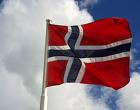Description from National Museum in Denmark:
The sonorous mystical tone of the bronze lur would ring out at religious ceremonies where the instruments were played in pairs as the priests and priestesses led ritual processions, some of the priests wearing horned helmets.
Lurs were cast in separate plates, and some have 'jingling plates' to create a magical sound. Thirty five lurs have survived in Denmark as have a further 24 in Sweden, Norway, North Germany and Estonia.
(Note - on other webpages these numbers differ)
============
Description from Wikipedia:
Bronze lurs
The bronze instrument now known as the lur is most probably unrelated to the wooden lur, and has been named by 19th century archaeologists, after the 13th century wooden lurs mentioned by Saxo Grammaticus.
Bronze lurs date back to the Nordic Bronze Age, probably to the first half of the 1st millennium BC.
They are roughly S-shaped conical tubes, without finger holes.
They are end blown, like brass instruments, and they sound rather like a trombone.
The opposite end to the blown one is slightly flared, like the bell on a modern brass instrument but not to the same degree.
A typical bronze lur is around two metres long.
==============
To listen to a sound bite of actual playing of the Lurs, in pairs, go to this link:
These 2 selections are the best, they are what the recording at the Stavanger Archeology Museum sounded like to me...haunting, ethereal, as said above--mystical (and I wonder further would the ancient Sirens songs have sounded like them? to lur-e the sailors...)
aa
"Forntida klanger"
Intrada
Intrada
==
Lat & Lur
Musikproduktion
Anne-Marie Sundburg
(Note: I think she's from Sweden)
Her Link: www.lurspel.nu/
Note: once again, many of these webpages are in Norwegian -but you can translate them with Google









